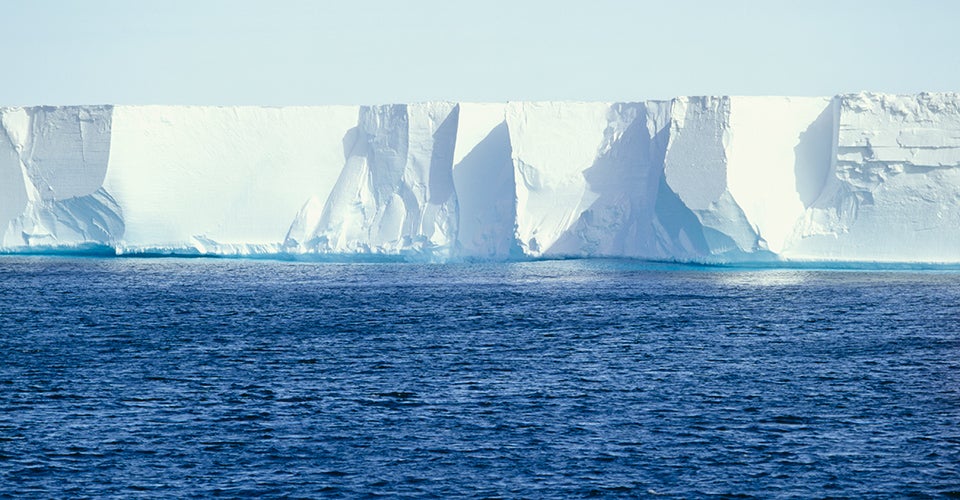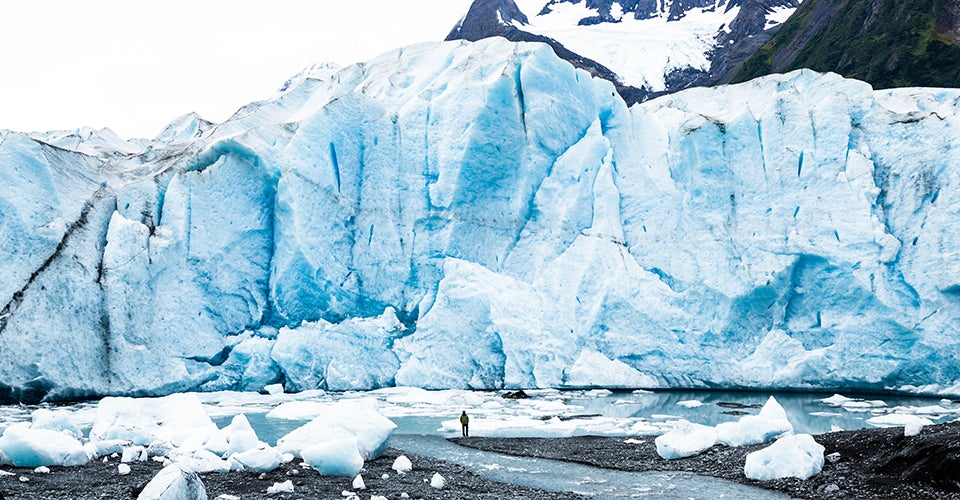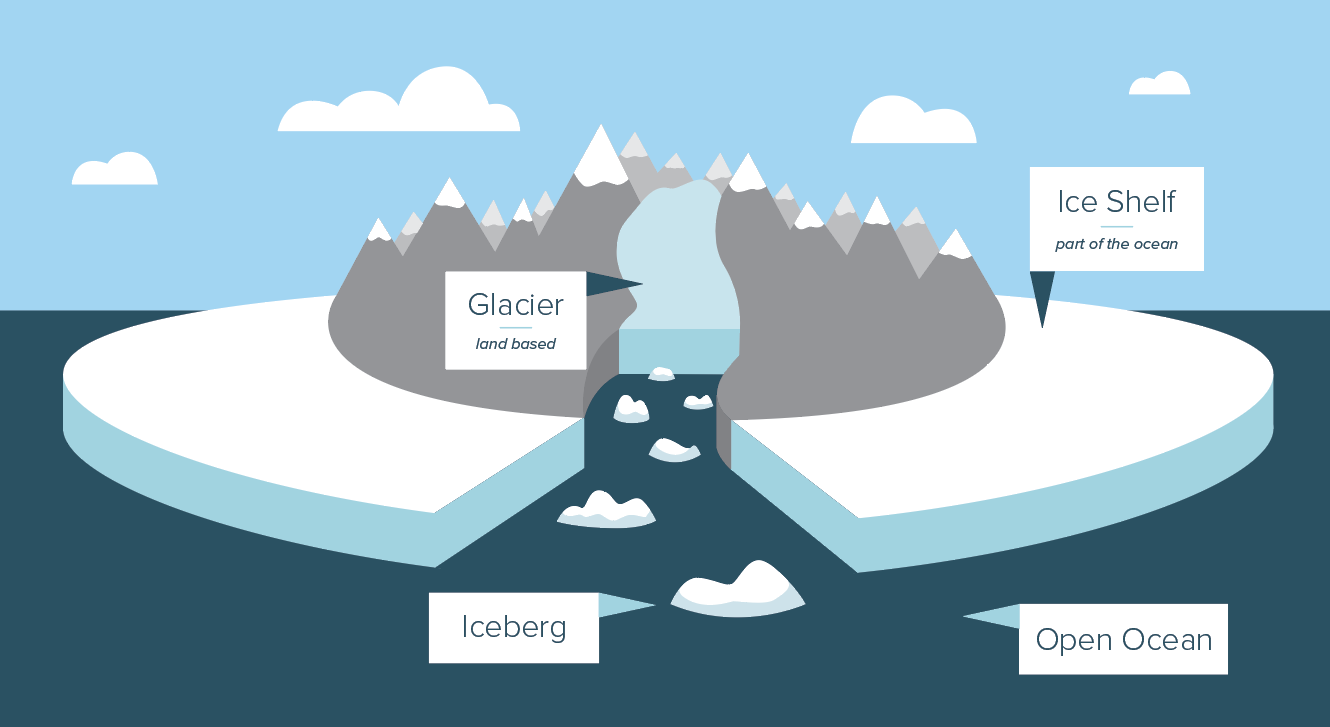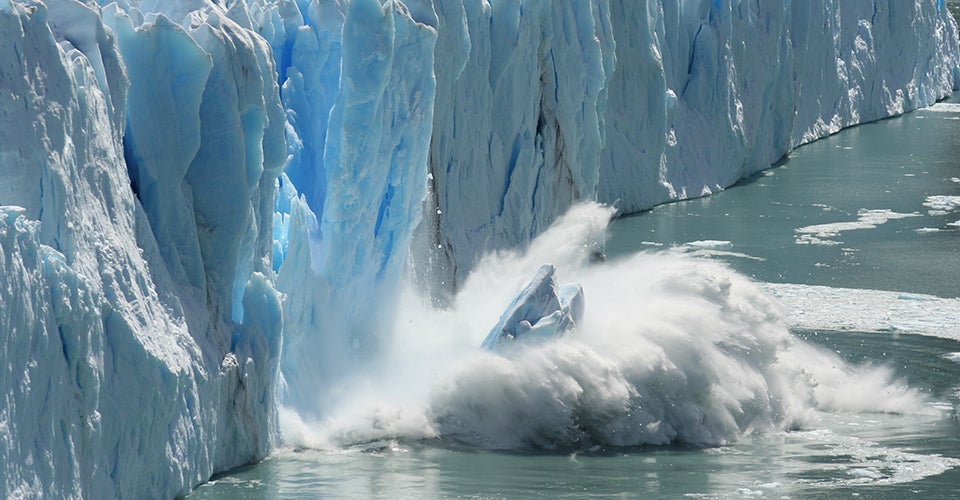What Is an Ice Shelf?

Ice shelves are part of the ocean, so they don’t affect sea level rise in and of themselves. They are constantly moving from a solid to a liquid already. But ice shelves buttress all the glacial ice on land. Think of them like a wall blocking all the ice on land from flowing into the ocean. If you take the ice shelves away, gravity starts pulling all the other ice to the ocean.
How Are Glaciers Formed?

Glaciers are comprised of snow and ice, compressed into large masses. Glaciers form as snow remains in a single place long enough to transform into ice. Glaciers advance and recede, meaning they flow, like a very slow moving river. Glacier size varies, with some growing as large as dozens or even hundreds of miles long.
Most glaciers are located in polar regions like Antarctica, Greenland and the Canadian Arctic.
What's the Difference Between a Glacier and an Ice Shelf?
Unlike ice shelves, glaciers are land-based. While glaciers are defined as large sheets of ice and snow on land, ice shelves are technically part of the ocean.

What Is Happening to Ice Shelves?
Ice shelves have always melted, but in an era of warming polar environments, it’s now happening at a faster rate. Most melting happens where the ice meets the ocean and largely goes unnoticed – until an ice shelf collapses, an increasingly frequent occurrence over the past decade.

All across polar landscapes, glaciers are advancing faster, which causes true sea level rise. Removing the ice shelves doesn’t make sea level rise in itself, but it’s removing a key protection for the glaciers that are advancing rapidly, which really would affect sea level rise.
Related Articles
Lichens Slow to Return After Wildfire
Solar Development: Super Bloom or Super Bust for Desert Species?
Decarbonizing California Transportation by 2045
Seagrasses Turn Back the Clock on Ocean Acidification
When ‘Eradicated’ Species Bounce Back With a Vengeance
Migratory Birds Track Climate Across the Year